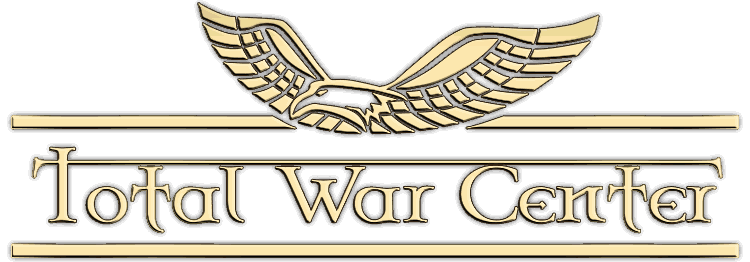 Re: New units faction roster proposals- Name of unit and brief history (suggestions with content appreciated)
Re: New units faction roster proposals- Name of unit and brief history (suggestions with content appreciated)
The Crusader States
That part is quite long but I couldn't choose to remove too much as it is full of details to explain how the system worked. I hope that MWY can use some of these info to make the CS script/economy system more accurate. I think it might be good to increase the trade incomes due to Italian merchants in CS ports but to increase taxes to reflect what it's called below the fief de soudée.
Part 2: Local Troops
Few non-knightly cavalry are recorded in the early 12th century, but the service of servientes loricati (armoured servants) and serjens a cheval (mounted sergeants) become more common later in the century. Not that all the knightly class were of European origin – most of those who settled after the First Crusade married local women and produced a class of so-called poulains. These were soon integrated as a vital part of the military élite. Though Catholic in faith, the poulains often clung to aspects of local culture and were sometimes despised by the supposedly “pure blooded” Westerners.
Other warriors of direct Middle Eastern origin, including some Armenians, were also raised to knighthood in the 12th century, while all the cavalry except the Turcopoles fought together.
Nevertheless, grades of military status remained rigid to the end. An agreement of compensation for death outside an official warfare, reached between the Lady Isabella of Beirut and Sultan Baybars of Egypt in 1269, stipulated that a captive knight be released in compensation for a slain knight, a Turcopole for a Turcopole, footsoldier for footsoldier, peasant for peasant.
The system of fiefs which supported this feudal élite was particularly complicated. Not only was the number of fiefs inadequate, but men owed service to more than one lord. Some fiefs were held by women, while others were Church fiefs which might owe no military service at all. (…) Other smaller fiefs were held by non-noble sergeants and Turcopoles.
The entire system was disrupted in 1187 when so much Crusader territory fell to Saladin. Though some ground was regained following the Third Crusade there seems to have been no more non-noble fiefs, while even a member of the aristocracy now had to be dubbed a knight before taking over his estates. The “Frankish” peasantry, never numerous, disappeared into the cities or turned renegade, so that the inhabitants of the countryside were now wholly indigenous. One solution to the shortage of land was to create the fief de soudée or money-fief for the many landless men and pilgrims who came to the East. These were not paid directly by the government but were the tolls of ports, markets, mills and bridges. Such fief-holders were, of course, city dwellers and their military obligations were unlimited. The origins of the idea are obscure but some Muslim iqtas were similarly based on tolls and dues. An increasing number of knightly and even lordly families had to rely on such sources of income after the disaster of Hattin, until by the last years of the Crusader States the great majority of fief-holders had such fief de soudée.
The military and political organisation for the other Crusader States was similar to that kingdom of Jerusalem. These owned theoretical, but not often effective, allegiance to Jerusalem, and in 1186 Saladin even thought it worthwhile offering Muslim “knights, sergeants and crossbowmen” to Count Raymond III of Tripoli in the hope of encouraging his defection. Mercenaries were commonplace in the armies of all Crusader states. Such men included knights who held no fiefs; instead they were paid for as long they were needed - or as long as the ruler could afford them. Others were paid by lords and fief-holders to serve in place of perhaps no longer existing lesser vassals. Rich and powerful men also maintained their own mercenary forces, particularly in the last anarchic years of the Crusader States.
In addition to these Westernised troops were those of local origin who fought in traditional ways. The most famous were the Turcopoles who were distinct from many of the native-born sergeants. Known personal names suggest that in the early days many were converted Muslim prisoners of war, of whom there were a large number. Such Turcopoles fought as light cavalry, usually as horse-archers though not using highly mobile harassment techniques of the nomadic Turks. Rather they operated like the professional mamluks or ghulams who formed the core of most Islamic armies. Many later Turcopoles may have been descended from these converts and the great majority was soon placed under the control of the Military Orders.
Other local troops also played a significant role, particularly in the 13th century, though the religious and social gulf between them and the dominant “Frankish” Catholic élite remained wide. The Maronite Christians of Lebanon were among the most effective, particularly as light cavalry and as infantry archers in mountain warfare. The Shi’a Muslims (Alawites and Nusayris) of the Syrian coastal mountains were equally effective, but were unpredictable to both Crusader and Sunni Muslim paymasters. They reserved their most reliable support for the Shi’ite Muslim Ismailis (Assassins) of the same mountainous region. For much of the 13th century the coastal range remained largely outside the control of both the coastal Crusader strip and the Muslim inland cities, some of its jabaliya (hill-folks) inhabitants supporting one side, some the other.
Last edited by Lifthrasir; June 11, 2014 at 06:42 AM.






 Reply With Quote
Reply With Quote


























